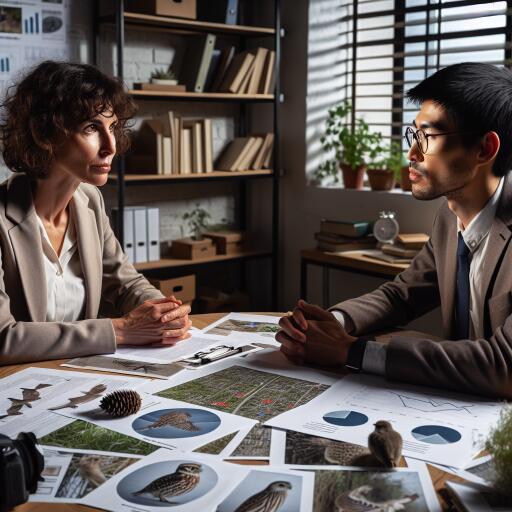
An In-Depth Conversation with Alison Schrag: Exploring Urban Wildlife Conservation
Within the bustling metropolis of New York City, intertwining the existence of urban inhabitants with the natural environment is a complex yet crucial endeavor. Spearheading the charge in urban wildlife conservation is Alison Schrag, a veteran in the realm of environmental science and an influential figure in fostering synergies between city life and nature.
Having achieved a Bachelor’s degree in Environmental Science, with a specialization in wildlife biology from SUNY College of Environmental Science and Forestry, Alison has dedicated her career to devising and implementing innovative strategies in habitat restoration and wildlife conservation. Her efforts underscore the critical importance of biodiversity within urban landscapes, where species must adapt to fragmented environments amidst skyscrapers and busy roads.
Key projects, such as the Urban Wildlife Initiative and Aquatic Habitat Restoration program, have been game-changers in revitalizing neglected ecosystems and boosting biodiversity in metropolitan settings. Through these endeavors, Alison has played a pivotal role in increasing public awareness about preserving nature within city boundaries. Moreover, her commitment to community engagement is evident as she frequently organizes workshops and seminars aimed at bolstering environmental stewardship among residents.
An avid wildlife photographer and birder, Alison Schrag leverages her hobbies to connect people with the natural world, revealing through her images the understated beauty of urban biodiversity. Her personal and professional pursuits position her as an influential advocate for integrating ecological considerations in urban planning.
Urban development presents significant challenges for local wildlife, often leading to habitat fragmentation or complete loss. Species once thriving in expansive woodlands now navigate through a maze of urban infrastructure. Alison champions solutions like enhancing urban green spaces, creating urban refuges, and establishing wildlife corridors to mitigate these impacts.
To balance conservation with development, Alison employs non-invasive technologies such as camera traps, acoustic sensors, and occasionally drones to monitor wildlife. This technological approach facilitates data collection on species presence, population dynamics, and behavioral patterns, enabling informed decision-making for conservation strategies and urban planning recommendations.
A notable success narrative involves the rehabilitation of a forgotten and polluted local wetland. Through cleanup efforts, introducing native plant species, and incorporating water features, the initiative witnessed a resurgence of amphibians and birds in mere years, benefiting both wildlife and enhancing community access to natural spaces.
Challenges in this work arise from aligning the conflicting interests of stakeholders, including city officials, developers, and residents. Finding a compromise that honors ecological needs while meeting urban development and community expectations demands extensive negotiation. Additionally, the limited availability of space for habitat creation or restoration in densely populated cities like New York presents another hurdle.
Public engagement stands as a cornerstone for the success of conservation projects. Alison emphasizes community involvement through information sessions, workshops, and guided nature walks that educate residents on local wildlife and ongoing conservation efforts. Citizen science programs encourage individuals to partake in data collection, fostering a sense of connection to conservation outcomes.
Technological advancements hold significant promise in the field of conservation, providing enhanced understanding of ecological patterns and predictions of future environmental impacts. Tools such as advanced data analytics, remote sensing, and AI are anticipated to offer proactive strategies for urban wildlife conservation, shaping informed decisions for ecological sustainability.
Alison’s upbringing in New York City instilled a passion for observing nature’s tenacity and adaptability within urban environments. She gravitates towards urban conservation, acknowledging the profound impact it can have on both biodiversity and human welfare. Cities are focal points for change, and contributing to this transformation is richly fulfilling for her.
Her counsel for aspiring conservationists is to embrace flexibility and remain open to diverse career paths within the field. Given its broad spectrum, opportunities often arise unpredictably. It is crucial not to overlook the significance of policy and community engagement as conservation involves collaboration with people as much as with wildlife.
Alison eagerly anticipates upcoming initiatives like integrating native plant species into urban landscapes citywide. This project seeks to support local pollinators while enhancing public education on the value of native flora and its role in urban aesthetics and functionality.
Measuring success in conservation can be a gradual process. Indicators include the completion of project components like habitat restoration, whereas long-term outcomes involve monitoring wildlife population stability or growth, the improved health of ecosystems, and increased community awareness and involvement in conservation practices.





Leave a Reply